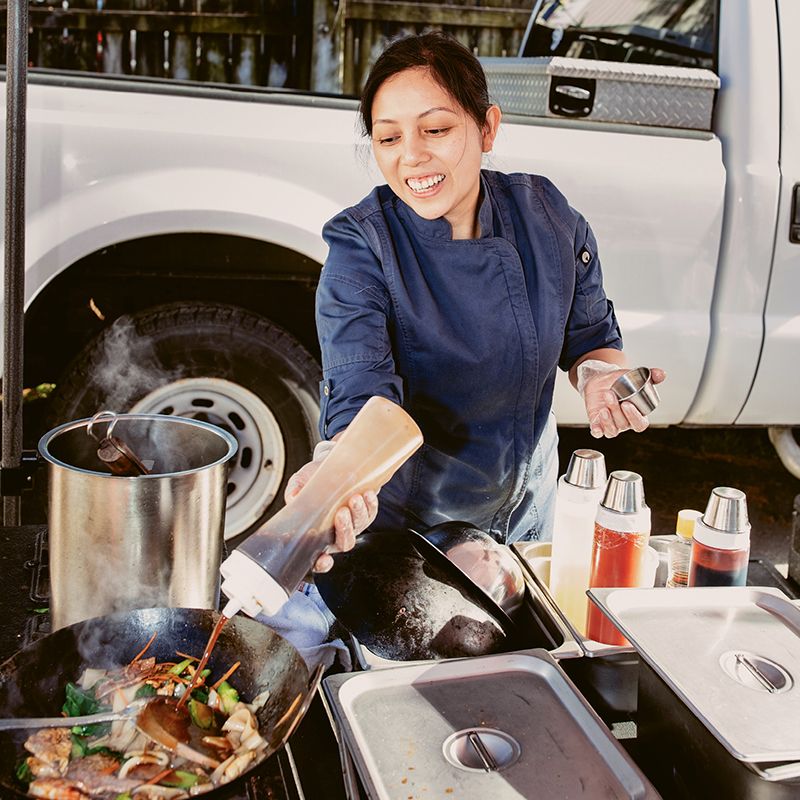Chatting with Sap-Lai's Tee Somsnith

CM: How did you get into cooking?
TS: I learned a lot from my Laotian family. It’s in our culture to bond over shared meals. When I was nine, we moved from Laos to Nashua, New Hampshire, and my aunt cooked for us all the time. I started waitressing five years later and got serious about cooking at 16 when I worked at a Vietnamese restaurant in Greensboro called Pho Hien Vuong. The owner and I hit it off, so she taught me all about Vietnamese cuisine and the secrets to making pho.
CM: You used to be a nail salon technician. How did Sap-Lai come about?
TS: With egg rolls. I would bring in a bunch I made at home for my co-workers, and they’d say, “Oh, you should make that again.” Next, they wanted a crispy rice salad called nam khao. I just kept adding new dishes. Soon, the other nail shops were calling me to order food, too.
CM: How did you decide to make this into a full-time gig?
TS: When I first started, my goal was to cater, but then I realized nobody knew my name yet. So I did a pop-up at Charles Towne Fermentory and discovered I really enjoy this type of service.
CM: What do you serve at Sap-Lai?
TS: In Laotian, sap-lai translates to “delicious,” which is how I hope guests view my cuisine. My food is Laotian, but I make all kinds of Southeast Asian food because of my experience working in Vietnamese and Thai restaurants. I mostly cook traditional, according to my upbringing, and I only use fresh ingredients. All the dishes are made from scratch each day, and most of my sauces are “old school” Laotian.
CM: How does Laotian pad Thai differ from the version found in Thailand?
TS: Laotian pad Thai is cooked with crunchy, caramelized noodles, garlic, and shallots, mixed with other ingredients like fresh bean sprouts and cilantro. It’s more reminiscent of a salad as opposed to a Thai-style stir fry and is one of our most requested dishes.
CM: What’s khao soi?
TS: Khao means “rice” in Laotian, but it’s really a rice noodle soup, popular in the northern Laos city Luang Prabang. The noodles sit in an herby broth that’s infused with tomato and fermented bean pastes. The recipe normally calls for ground pork, but I use chicken because not everyone eats pork. This will be a staple for us in the spring.
CM: Why do you prefer cooking under a tent rather than in a food truck?
TS: The heat can get pretty bad in a truck, and I dislike the idea of being enclosed in a beautiful city like Charleston. Also, when I cook, I like people to be able to watch me. Customers will usually stand there and see me with the wok and notice our set-up, which just makes the whole process feel more real to me. It’s so much fun to interact, so I always try to face the customers when I’m cooking.
CM: What’s on deck for spring?
TS: Our schedule is posted on social media, but we’ll be at Charles Towne Fermentory every Monday and Container Bar every Tuesday or Thursday through the end of May. Down the road, we’ve discussed creating a box meal of our Laotian pad Thai so people can take it out of their freezer and cook it in the microwave whenever they want.
Photographs courtesy of (beer) Charles Town Fermentory & (843) 843 Korean BBQ & Sushi House